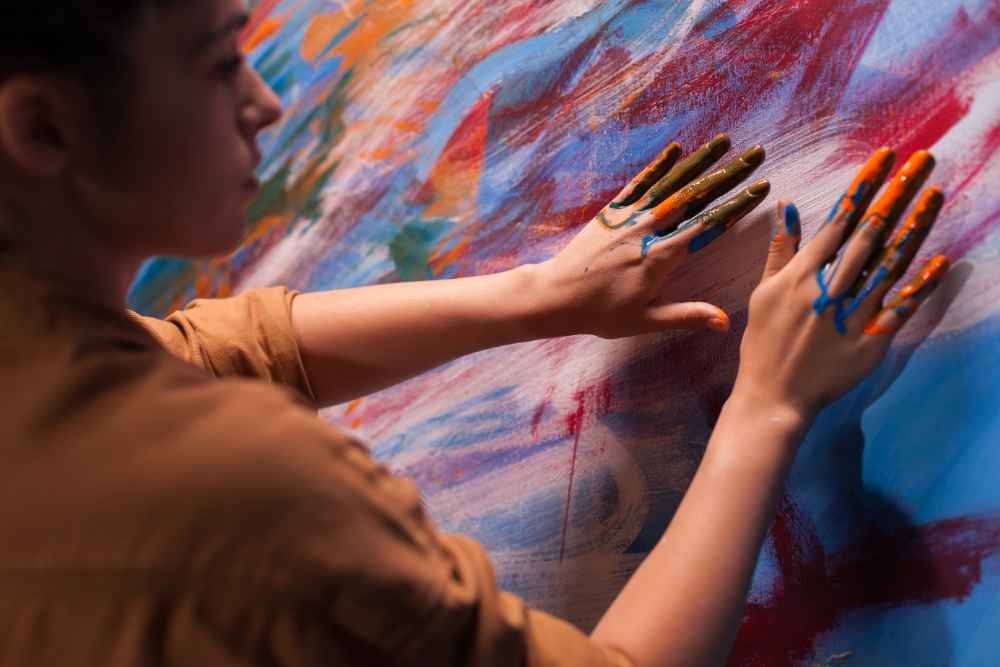In 2025, you could argue that Tattooing has never looked better. Open Instagram — thirty seconds in, and you’re hit with an endless parade of hyper-smooth blends and laser-sharp lines. Every photo perfectly lit, perfectly framed. Perfectly performing. At first glance it looks like evolution. Like tattooing has levelled up into some kind of high-definition utopia.
But look closer — and you’ll see something else. Everything’s starting to look the same. Different artists, same output. Different studios, same aesthetic. The feed becomes a loop — an endless déjà vu. That’s not growth. That’s stagnation wearing a filter. An algorithmic treadmill that convinces us we’re moving while we’re actually standing still.
–
SKILL ALONE IS A CAGE
Technology made skill visible — measurable. Now, likes tell you if your tattoo is “good.” But the algorithm doesn’t reward originality. It rewards the familiar. The repeatable. The safe. So we chase trends. We feed the machine. Black-and-grey realism, fine-line florals, tiny tattoos — technically flawless, but uniform. Predictable. Riskless. We’ve mistaken polish for progress, and built a culture that’s technically perfect but artistically flatlined.
I’ve seen it happen over and over — new artists judged more by their feed than their sketchbook. Clients see polished portfolios and think “talent.” But is it art? Or just something that photographs well in a square? Tattooing isn’t about algorithmic validation — it’s about connection. You can’t automate curiosity or intuition. And, if you’re waiting for the algorithm to guide your art, you’re already behind.
CONTENT VS ART
Most tattooists aren’t concentrating on making art anymore. They’re making content. Tattoos designed not for the human wearing them — but for the feed watching them. In 2025, we judge tattoos by how they perform online. But do they say anything? Do they carry weight? Do they push the language of tattooing forward?
The metric now is: will it stop a thumb mid-scroll?
A “content tattoo” is bright, clear, trendy — bait, not expression.
Art doesn’t work like that. Art’s messy, risky, human.
Art asks, “Does this feel true?”
Content asks, “Will this go viral?”
.
CREATION VS ANALYSIS
Creation needs surrender. Analysis needs control. Mix the two and you get compromise — work that’s flawless to the eye but hollow to the spirit. Tattoos not made to live — but to perform. Creation is supposed to feel wild, irrational, uncomfortable. Editing is where you refine it. But when you over-edit — when you polish out all the soul — you don’t get great art. You get vanilla. That’s why so much tattooing today feels empty. Because the outer world has colonised the inner.
Algorithms are objective. Art is subjective. One rewards patterns. The other breaks them. Algorithms can’t recognise nuance, subtlety, or soul. They only understand “more of this.” Art thrives on surprise — on rule-breaking, on risk. When you create for the algorithm, you’re trying to measure your soul with a ruler. No wonder everything feels the same.
WHAT TATTOOING LOSES
That sameness is exhausting. Scroll long enough and you feel it — the déjà vu. Tattooing online doesn’t feel like discovery anymore. It feels like catalog shopping. Artists are burning out, chained to content calendars, measuring their worth by views instead of meaning.
That’s not art. That’s unpaid marketing for a platform that doesn’t care about you.
Nothing kills originality faster than a trend. One tattoo goes viral — a butterfly, a geometric wolf — and within weeks, you see hundreds of clones. The first one might’ve been inspired. The rest? Just carbon paper with better lighting. True breakthroughs happen in the margins — in the weird experiments that don’t trend. When tattoos become content, they stop being symbols and start being tokens. They stop being about the person wearing them, and start being about engagement. Tattoos are meant to live on skin — to last beyond the feed. Reducing them to content strips them of everything that makes them powerful.
WHERE DO WE GO FROM HERE?
We go inward. We make art with grit, with risk, with soul. We make tattoos that don’t photograph well but live beautifully. Tattoos that confuse algorithms but resonate with humans. We stop asking, “Will this go viral?”
And start asking, “Does this feel true?”
Rick Rubin said: The audience comes last. That’s where we begin again.
Tattooing doesn’t need more content. It needs more art. More messy beginnings. More experiments that might fail — but move the craft forward. Because the tattoos that last — the ones that shape culture — aren’t the ones that trended. They’re the ones that carried a piece of your soul.
